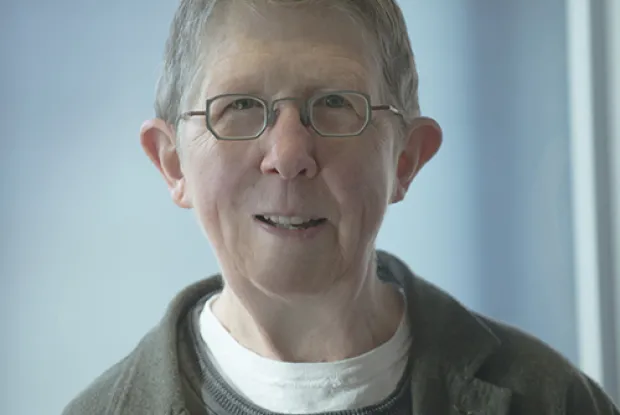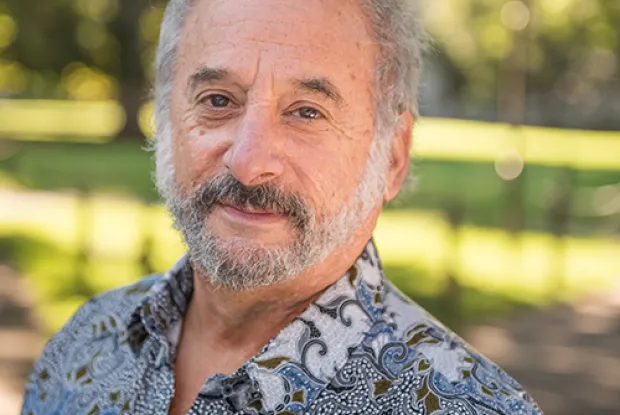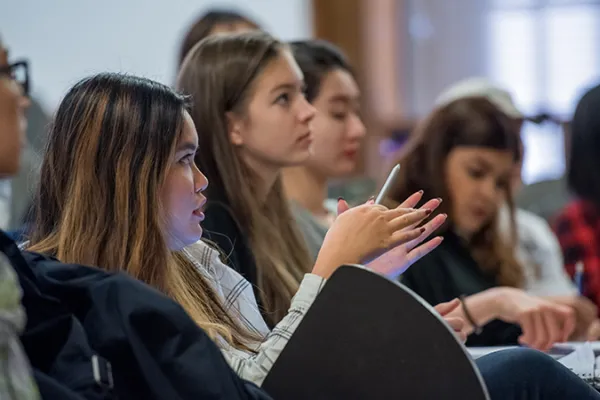What’s Special About Teaching at Smith?
Faculty
This year's Sherrerd Teaching Award winners share their thoughts
Published October 3, 2023
Professor Jay Garfield was drawn to become an educator by the teachers in his own life.“I aspired to do what they did, to introduce others to ideas and the joy of learning,” says Garfield, Doris Silbert Professor in the Humanities and Professor of Logic, Philosophy and Buddhist Studies.
Barbara Kellum, professor of art, says her experience in the field has been helped by “wonderful mentors at every stage of my career, including my awe-inspiring 12th-grade English teacher, Miss Cecil Carnes, Smith class of 1934.
Erin Pineda, Phyllis Cohen Rappaport ’68 New Century Term Professor of Government, credits a college history professor with engaging her in new subjects that made her want to become a teacher and also helped her “find herself as a researcher."
The three faculty members are the 2023 recipients of the Kathleen Compton Sherrerd ’54 and John J.F. Sherrerd Prize for Distinguished Teaching. Established in 2012, the awards are given annually to faculty members who demonstrate the highest levels of enthusiasm and excellence in teaching at Smith.
Students, faculty and staff are invited to celebrate this year’s honorees at a ceremony on Thursday, Oct. 12, at 4:30 p.m. in the Campus Center Carroll Room. A reception will follow in the atrium.
We asked the 2023 award recipients to share some thoughts about their work in the classroom. Here’s what they had to say:
How has your teaching style evolved since you first arrived at Smith?
Barbara Kellum: “When I first arrived at Smith, lecturing was the standard, especially in courses like Art 100. But I quickly discovered that it was in the discussion sections that the real learning took place. Thanks to many teaching workshops, I am now a facilitator in class, rather than an information giver, so that even in large classes it’s student observations about the subjects we are considering that drive the conversation.”

Erin Pineda: “What used to make me most nervous about teaching is now what I find I enjoy the most: the unpredictability of it. I used to prepare and prepare and over prepare to teach, walking into class with this meticulous set of notes so that I could plan for and respond to every potential road that discussion might walk down. I still prepare a lot, and I always walk into the classroom with a means of scaffolding a discussion. But I put a lot more emphasis now on teaching as a practice of active listening and collective responsiveness. Now, I leave the classroom so excited about the ideas collectively generated by my class precisely because I could not have come up with them on my own.”

Jay Garfield: “When I began teaching, I discovered that it is one of the most enjoyable things one can do—the reason I feel I’ve never worked a day in my life. I came to Smith in mid-career and my teaching style was pretty set by then. But I have continued to learn new ways to present material, ways to integrate technology and, during COVID, I learned to teach online. Also, through Smith’s Mellon program, I’ve learned how to integrate public facing writing into my teaching.”

How do you stay inspired about your work in the classroom?
Garfield: “How could one not be inspired? There is nothing more exciting than walking into a classroom or sitting down with students in my office. Sparks fly. Insights emerge. Ideas develop. It never gets old and it always feels like a great privilege to be present with and involved in learning.”
Kellum: “I fell in love with the ancient Mediterranean world in the 9th grade and learn something new about some aspect of it almost every day—which I am always eager to share and relate to something in contemporary culture. Discussing all of this with students generates excitement and leads to yet more discussion for all.”
What is the biggest challenge you face as an educator?
Pineda: “I’m a humanities scholar and these are difficult times for the humanities. I am also a scholar trained in the critical study of race, working in a political moment in which the legitimacy of my entire field is coming under right-wing assault. While Smith is, and continues to be, a safe and open space within which to pursue my work with students, it’s really difficult to do this work within the broader context. It raises existential questions about where higher education is headed and what role each of us should play in building the future we want to see—and in preserving the humanities and critical work on race as areas of inquiry to which all students can and should have access.”
What is special about teaching at Smith?
Garfield: “Being a member of a community of excellent teachers, scholars who take teaching seriously; the privilege of having students who come ready to learn and who see us as allies in education, not as adversaries assessing them as gatekeepers or taskmasters; and being part of an institution that values teaching and that provides so much support for developing and executing that craft.”
Kellum: “First and foremost, the students! And, of course, students go on to become alums and a part of an astounding network with a deep passion for this place and all it has to offer. It makes my day every time I hear from a Smithie. I am also proud to teach at an institution that values equity and inclusion and has eliminated student loans.”
Pineda: “Smith students enter the classroom with so much curiosity and passion—so much desire to learn, and so much desire to use knowledge to benefit the world beyond campus. They are opinionated, but also very generous with me and each other. It never ceases to amaze me how caring and careful they are with each other’s ideas, arguments and questions.”
